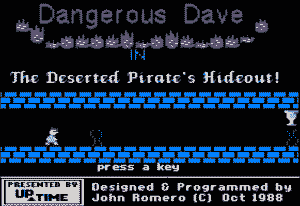Retro Replay Review
Gameplay
E.S.S. Mega places you in the pilot’s seat of a fully modelled space shuttle, tasking you with every intricate decision from fuel allocation to crew manifest. The single, overarching campaign unfolds as a series of meticulously crafted missions, each demanding a careful balance between risk and reward. You’ll spend as much time in pre-launch configuration screens—tweaking cargo weight and power reserves—as you will navigating the shuttle through Earth’s atmosphere and beyond.
(HEY YOU!! We hope you enjoy! We try not to run ads. So basically, this is a very expensive hobby running this site. Please consider joining us for updates, forums, and more. Network w/ us to make some cash or friends while retro gaming, and you can win some free retro games for posting. Okay, carry on 👍)
Once you’re airborne, the game transitions into a hands-on flight simulator that captures the nuances of real orbital mechanics. Maneuvering the shuttle through takeoff, orbital insertion, and re-entry requires precision timing and steady control inputs. Docking with the shuttle carrier and deploying satellites feel genuinely challenging, rewarding patience and a steady hand. If you misjudge your approach speed or angle, you’ll find yourself making costly mid-mission corrections—or worse, facing a catastrophic abort.
Beyond individual flights, E.S.S. Mega expands your responsibilities to include satellite deployment and long-term space station management. Building modules piece by piece, ensuring stable orbits, and allocating power resources across multiple installations give the campaign a satisfying layer of strategic depth. The in-game space database keeps track of orbital parameters, scientific payloads, and crew health, allowing you to plan future missions with a scientist’s rigor and an engineer’s caution.
Graphics
At its core, E.S.S. Mega employs 3D-modelled graphics that blend realistic shuttle interiors with sweeping views of our planet from orbit. Instrument panels are rendered in crisp detail, complete with functional gauges and switches that respond to your inputs. While textures sometimes show their age, the overall design evokes the tactile satisfaction of operating a genuine spacecraft console.
The external visuals shine during launch and orbit sequences, with dynamic lighting casting soft shadows across the shuttle’s fuselage as it pierces the cloud layer. Earth’s curvature, rendered with accurate continental outlines and cloud patterns, creates an immersive backdrop for your missions. Docking animations and satellite deployments also benefit from smooth camera transitions, helping you gauge distances and alignments in real time.
One standout feature is the informational HUD built into the cockpit view, which overlays trajectory data, fuel readings, and power usage in a clear, non-intrusive manner. The database screens, though text-heavy, integrate seamlessly with the 3D environment, offering quick access to orbital charts and mission logs without disrupting the visual flow. Even if the graphical fidelity isn’t on par with the latest blockbuster simulators, E.S.S. Mega’s presentation remains functional and thematically consistent.
Story
While E.S.S. Mega doesn’t follow a traditional narrative arc with characters and cutscenes, it weaves a compelling career progression that feels like your own space agency’s rise to prominence. Each successful shuttle mission adds credibility and unlocks larger, more ambitious tasks—transitioning from simple satellite launches to the complex choreography of station construction. The sense of achievement builds organically as you tackle ever more challenging objectives.
The in-game space database doubles as a lore repository, providing context on orbital mechanics, spacecraft design, and historical precedents. Skimming through these entries feels akin to reading a mission briefing from a real-world space agency, lending an educational layer to your play sessions. As you climb the ranks, the narrative subtext of exploration and technological advancement becomes apparent, even without a scripted storyline.
Moments of narrative flair emerge during critical mission failures or narrow successes. A last-second thruster correction that saves your crew from an unintended re-entry corridor can feel as cinematic as any scripted drama. Although personal stories of astronauts aren’t at the forefront, the emergent storytelling born from your own trial-and-error experiences brings its own unique flavor to the simulation.
Overall Experience
E.S.S. Mega excels as a deep, detail-oriented shuttle simulation, ideal for players who savor realistic piloting challenges and scientific management. The learning curve is steep, but the game’s systems reward careful planning and methodical execution. Casual players may find the interface and intricate controls daunting at first, but those who persevere will uncover a rich sandbox of orbital engineering and mission design.
The game’s modular campaign ensures strong replayability: you can experiment with different payload configurations, attempt more fuel-efficient flight paths, or prioritize rapid station expansion. The in-game database and mission logs help you refine your approach, fostering a sense of mastery over time. While the lack of a traditional storyline might deter fans of narrative-driven titles, the authentic simulator experience stands on its own merits.
For prospective buyers seeking a blend of educational value and hands-on shuttle operations, E.S.S. Mega offers a compelling package. Its graphics, though not cutting-edge, remain serviceable and help ground the simulation in a believable world. Above all, the satisfaction of executing a flawless docking maneuver or constructing a stable orbital outpost makes this title a must-play for spaceflight enthusiasts and aspiring mission controllers alike.
 Retro Replay Retro Replay gaming reviews, news, emulation, geek stuff and more!
Retro Replay Retro Replay gaming reviews, news, emulation, geek stuff and more!








Reviews
There are no reviews yet.